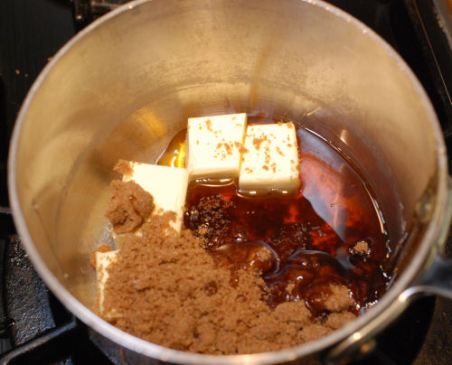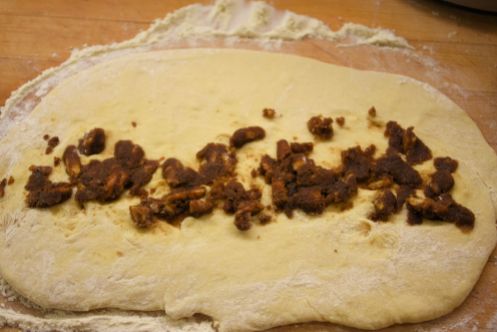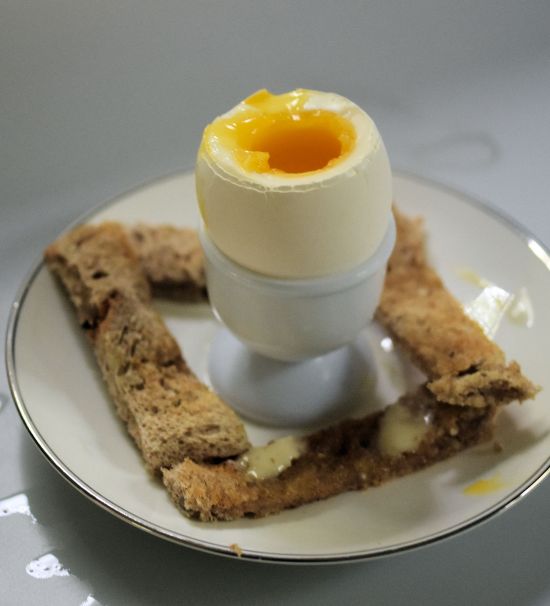Sticky buns are a spectacular way to start any morning, and it really isn’t hard to make them if you start with 90 minutes or so free the night before. The result is hot, delicious baked buns in the morning that everyone will love. We usually start making the dough about 9 pm, and put the rolls together around 10:15 pm.
There are three parts to sticky buns: the glaze, the filling and the dough. Some recipes suggest a brioche dough, which is delicious, but quite a bit more work. Our dough is a simple yeast dinner roll dough that you let rise for an hour and then form into buns that rise over night. The overall buns are so rich that the kind of dough doesn’t actually matter much.
To make the dough
- 1/2 cup warm water
- 1/2 tsp sugar
- 1 package regular yeast (avoid the rapid rise variety)
- 1/2 cup milk
- 1/3 cup shortening
- 1/4 cup sugar
- 1 egg
- 3 cups flour (about)
- Add the 1/2 tsp sugar to the water and stir in the yeast. Allow the solution to stand until the yeast begins to bubble and foam a bit (maybe 4-5 minutes)
- Meanwhile, mix the milk, shortening and sugar, and heat in a microwave for one minute.(The shortening does not have to melt.)
- Add 1 cup of the flour to the work bowl of a food processor and pour in the warmed milk. Process until blended.
- Add the egg and mix in.
- Add the yeast mixture and mix in.
- Add flour until you have a soft dough.
- Allow the dough to rise until doubled in bulk, about an hour.
While the dough is rising, make the glaze and the filling.
To make the glaze
- 1 cup brown sugar
- 1 stick (8 oz) unsalted butter, cut up
- 1/4 cup honey
- 1 1/2 cups pecans
In a heavy-bottomed saucepan, bring the brown sugar, butter and honey to a boil over medium heat, stirring to dissolve the sugar.
Pour the glaze into two buttered square 9” pans, or one oblong pan, and sprinkle the pecans over top.
To make the filling

- 4 Tb butter
- 1/2 cup brown sugar
- 1/2 tsp cinnamon
- 1/2 cup chopped pecans
- Melt the butter for 30-40 sec in a microwave, and mix in the sugar and pecans
Assembling the buns
- When the dough has risen, punch it down in a floured board, and divide in half.
- Roll out each half to a 6 x 18” rectangle and sprinkle with half the filling.
- Roll up the dough lengthwise into a roll and cut each roll into 9 slices
- Place the slices in the two pans, cover with aluminum foil, and let rise over night in a cool place, such as a basement.
- In the morning, heat the oven to 375 º F and bake the buns for about 15 minutes, until the glaze is bubbling.

Loosen the rolls from the sides of the pan with a small spatula, and then place a plate over each pan and invert it quickly. This is best done over the sink as some glaze will probably dribble out. The rolls should drop onto the plate.
Scrape any remaining glaze onto the rolls and allow them to cool a bit before serving,

Makes 18 buns.
Note: The overall flavor of the glaze is influenced by the honey, so be sure to choose a milder flavored honey.
















 Using a slotted spoon or other long handled spoon, quickly lower the eggs into the basket, and cover the pan. Let them cook for 6 ½ minutes. Then run cold water into the pan, drain and run in cold water again to stop the eggs from over cooking. Don’t worry, they’ll still be plenty warm.
Using a slotted spoon or other long handled spoon, quickly lower the eggs into the basket, and cover the pan. Let them cook for 6 ½ minutes. Then run cold water into the pan, drain and run in cold water again to stop the eggs from over cooking. Don’t worry, they’ll still be plenty warm.


 So, how do you open this egg? Experienced egg cup users just flick the top of the egg with a butter knife and cut it open. You can also get an “egg topper,” that will score the top of the egg when you pull on the handle and let go. It may or may not take the top off, but once it is scored, you can lift it off easily. So here they are, with eggs in the cups. And we’ll have to admit, they do look elegant.
So, how do you open this egg? Experienced egg cup users just flick the top of the egg with a butter knife and cut it open. You can also get an “egg topper,” that will score the top of the egg when you pull on the handle and let go. It may or may not take the top off, but once it is scored, you can lift it off easily. So here they are, with eggs in the cups. And we’ll have to admit, they do look elegant.


